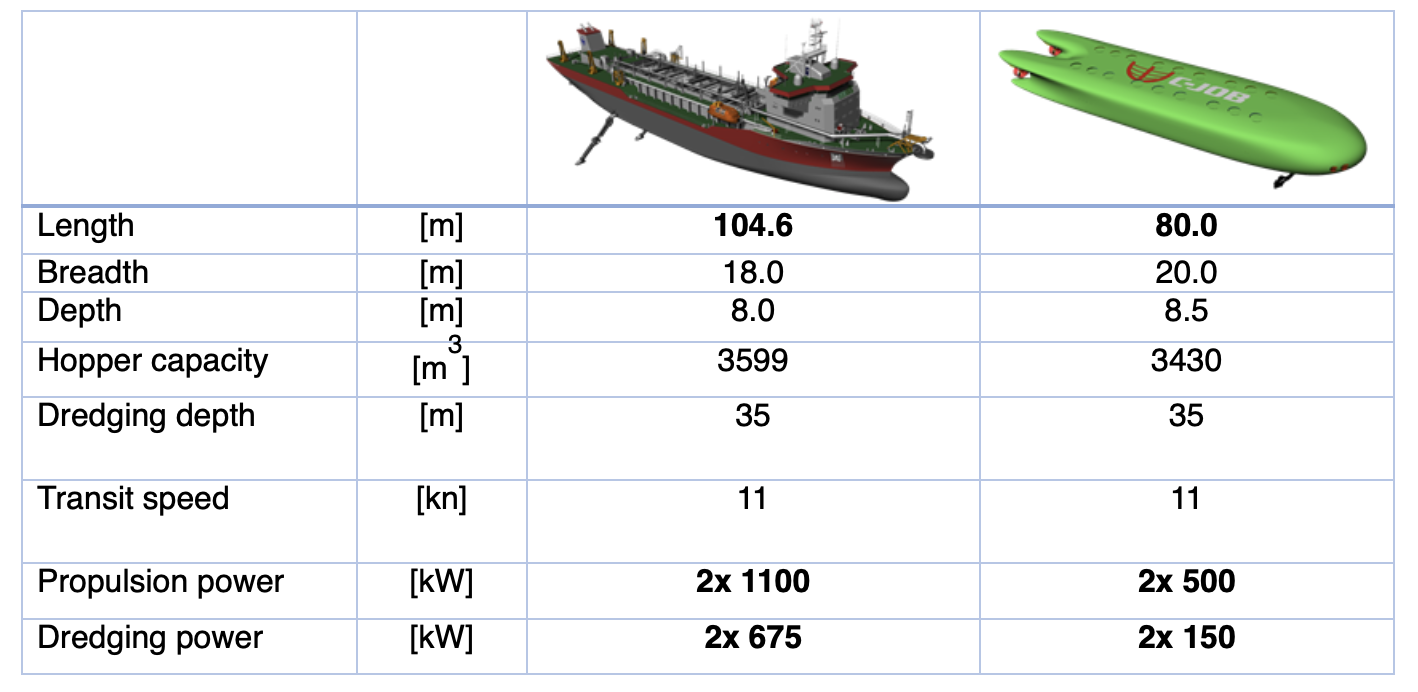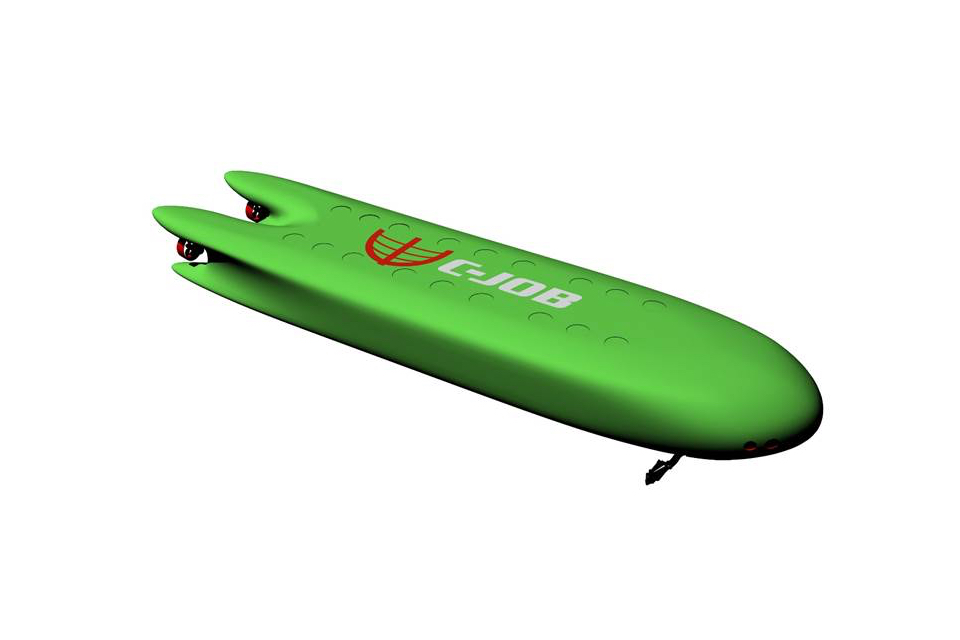C-Job Naval Architects has revealed a concept design of an Autonomous Underwater Maintenance Dredger. The dredger has been specifically created for maintenance in port environments. Although the initial investment is higher, operational costs are much lower when compared to a conventional dredger.
The design was presented on 14 November by the Dutch independent ship design and engineering company at the combined Maritime and Port Technology and Development Conference (MTEC) and international Conference on Maritime Autonomous Surface Ships (ICMASS) in Trondheim, Norway.
Submerged Dredging
The Autonomous Underwater Maintenance Dredger (AUMD) has been developed by C-Job’s Research and Development department. The team took advantage of the opportunities and out-of-the-box solutions autonomous vessels provide such as completely submerging a dredging vessel.
This one-of-a-kind design is sustainable as it requires significantly less power compared to a conventional dredger. The AUMD is equipped with a sixteen-megawatt-hour battery pack that provides enough power for up to twelve hours of maintenance dredging.
Rolph Hijdra, Autonomous Vessels Research Lead at C-Job, says: ‘When we developed this exciting design, we performed a comparison study with a conventional Trailing Suction Hopper Dredger. This showed that the Autonomous Underwater Maintenance Dredger requires 55 per cent less propulsion power and by submersing the vessel we could reduce the suction head cutting the dredge pump power demand by eighty per cent.’ Due to the vessel working under water, the head of the dredge pump can be reduced from nearly 35 metres to only six metres.
The Autonomous Underwater Maintenance Dredger requires 55 per cent less propulsion power
The submersion of the design also increases operability as it mitigates wave motions as it can remain submerged throughout the dredging cycle. It only needs to surface for repair, maintenance and charging its batteries. The AUMD features the same hopper volume as the traditional dredger even though the overall length of C-Job’s design has been reduced by twenty per cent.
Reduced Operational Costs
‘Autonomous shipping provides enormous potential for ship owners, with both technical design and economic benefits,’ Hijdra points out. ‘According to our research, even with a conservative approach, we found that with the AUMD, ship owners can expect nearly twice as much profit after fifteen years. Though there’s a higher initial investment, operational costs are much lower which makes it an interesting option for companies to consider.’
Emergency Access and Data Communication
While the Research and Development team focused on reduced power demand, sustainability, and operability, they also considered other aspects of the design. This includes emergency access which can be obtained through the diver’s lock included in the design. Data communication with the vessel was envisaged via shore-based communication networks such as 4G/5G.
Other Design Features
- Sliding bottom doors for accurate/precise seabed dumping with reduced dredge plume. Repetitive repairs as of wave induced loads around bottom door openings are likely to decrease.
- Top side opening for in/outflow of water.
- Fully redundant propulsion both in power supply as well as azimuthing and bow thrusters.
- The hull shape allows for operations near the seabed with the flat bottom cross section. In addition, the depth of the vessel is limited to only 8.5 metres, which enables it to operate in shallow waters.
- Overall hull girder loads (SWBM) reduce because of rearranging the layout of the vessel; the hopper became longer and less wide than comparable trailing suction hopper dredgers.
- Due to the fully buoyant hull a higher payload over main dimension ratio is obtained.
- A protective propeller heel was developed in order to reduce the risk of squat and reduce early wear of the propellers due to sand inflow into the propellers.
- As the hopper is supposed to be open to sea at all times, no sloshing effect is present. This reduces the amount of trim/heel compensation significantly, which eases the operations. Still, several trim and heel compensating ballast tanks are envisioned in the design.
 Specifications of the AUMD and conventional dredger comparison study
Specifications of the AUMD and conventional dredger comparison study
Further Development Needed
Tim Vlaar, Technical Director at C-Job, says: ‘In order for autonomous vessels like the AUMD to become reality, more work is needed and requires all stakeholders such as class, port authorities, autonomous technology companies and launching customers to come together. Of course, continued development of autonomous vessel designs is also needed to fully explore the possibilities autonomous shipping presents even further.’
[youtube id=”y9ULNrIhDBI”]








